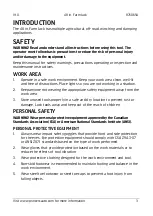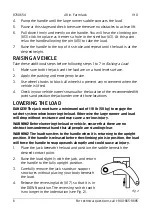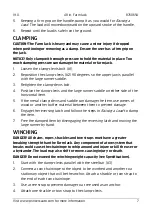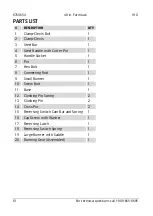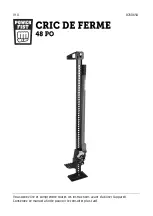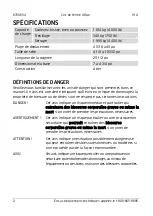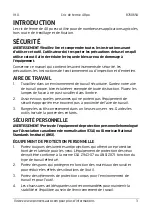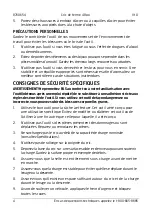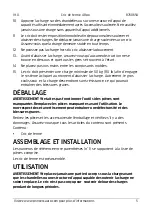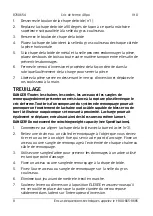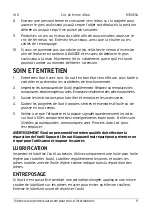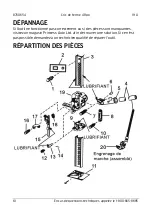
V1.0
48 in. Farm Jack
8760654
Visit www.princessauto.com for more information
7
5.
Keeping a firm grip on the handle, pump it as you would for
Raising a
Load.
The load will move downward on the upward stroke of the handle.
6. Repeat until the load is safely on the ground.
CLAMPING
CAUTION! The Farm Jack is heavy and may cause a minor injury if dropped
when positioning or removing as a clamp. Ensure the user has a firm grip on
the jack.
NOTICE! Only clamp with enough pressure to hold the material in place. Too
much clamping pressure can damage the material or farm jack.
1.
Loosen the clamp-clevis bolt (#1).
2. Reposition the clamp-clevis (#2) 90 degrees, so the upper jaw is parallel
with the large runner saddle.
3.
Retighten the clamp-clevis bolt.
4.
Position the clamp-clevis and the large runner saddle on either side of the
horizontal item.
5.
If the metal clamp-clevis and saddle can damage the item, use pieces of
wood or another buffer material between them to prevent damage.
6. Engage the reversing latch and follow the steps in
Raising a Load
to clamp
the item.
7.
Free the clamped item by disengaging the reversing latch and moving the
large runner by hand.
WINCHING
DANGER! All chains, ropes, shackles and tow straps must have a greater
breaking strength than the Farm Jack. Any component of a tow system that
breaks could cause the chain/rope to whip around and injure or kill the user or
a bystander. The load may also shift or move, causing injury or death.
DANGER! Do not exceed the winching weight capacity (see Specifications).
1.
Start with the clamp-clevis parallel with the steel bar (#3).
2. Connect a tow chain/rope to the object to be winched and another to a
stationary object that will be the anchor. Attach a shackle or tow strap to
the end of each tow chain/rope.
3.
Use a tree strap to prevent damage to a tree used as an anchor.
4.
Attach one shackle or tow strap to the clamp-clevis.



